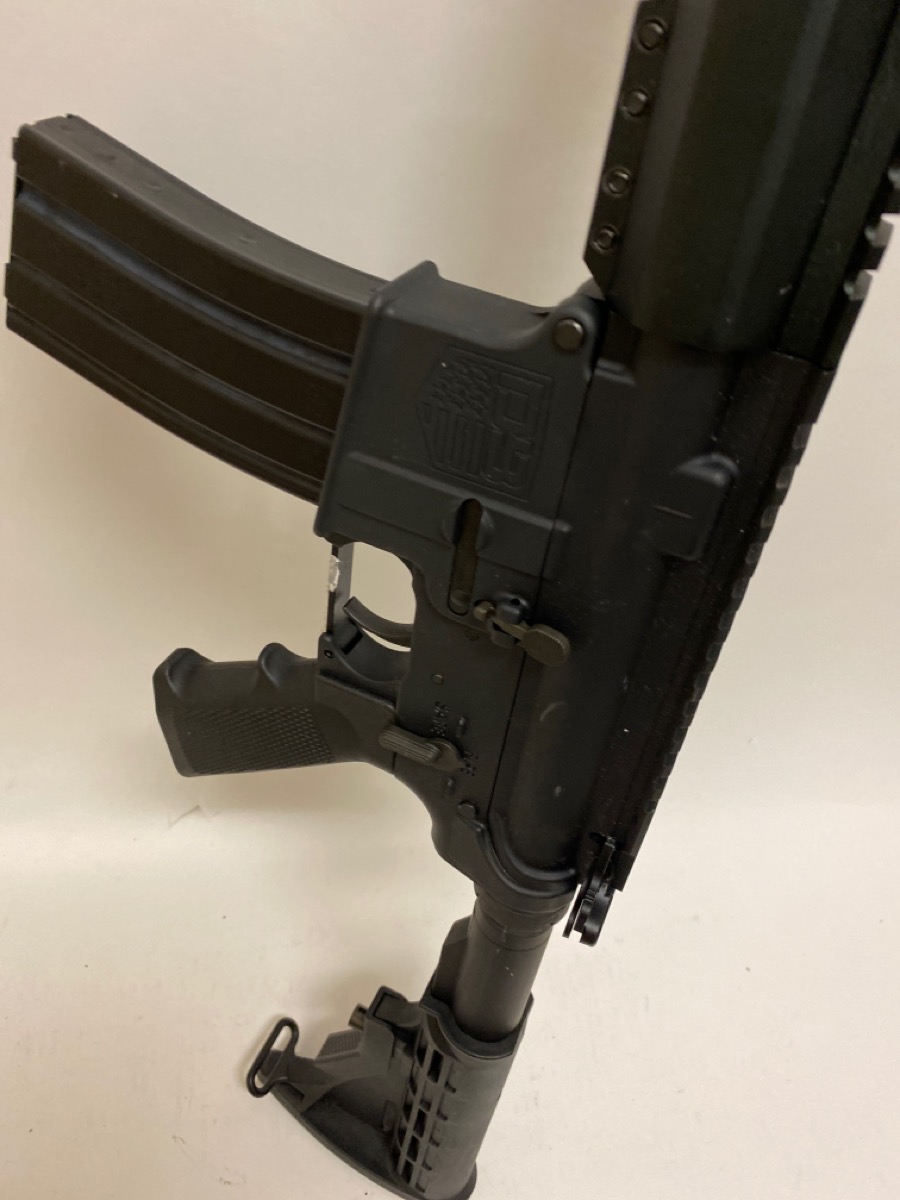
PEW Science Research Note 2: The closing time of the MK18 bolt is directly related to the flow restriction of a silencer for a given weapon system. The pressure signature of Shot 6 does not display this event due to the bolt remaining open after the sixth and final round is fired from the magazine. However, in late time (at approximately 91 ms in Figure 1a) the mechanical noise of the bolt closing is observed. PEW Science Research Note 1: As in all semiautomatic AR15 weapon testing, a second pressure pulse originates from the ejection-port signature of the weapon and it occurs early enough in time such that its waves coalesce with that of the muzzle signature. It should be noted that the FRP measured at the muzzle from the HX-QD 556 is significant enough that it is noticeable to bystanders, in accordance with PEW Science inner ear response analysis. The measured first-round-pop (FRP) is visible in both the pressure and impulse regimes, in peak amplitude, timing, and wave shape, as is typical from a suppressed rifle. Omega metric data for the 5.56x45mm cartridge is the subject of ongoing PEW Science research. The OSS HX-QD 556 has significantly lower flow restriction (back pressure) than the Surefire SOCOM556-RC2 and the SilencerCo Saker 556. This behavior is consistent with a low PEW Science Omega Metric (low flow restriction low back pressure). Note that the rate of rise to maximum positive phase impulse is relatively fast. In addition to low back pressure features in pressure-space, the HX-QD 556 also exhibits distinctive waveform features in impulse-space (Figure 2). This behavior is extremely similar to that exhibited by the OSS HX-QD 762 with 7.62x51mm ammunition from a 20-in bolt action rifle (Review 6.41). Distinctive waveform features consistent with low back pressure silencer behavior are highlighted in Figure 1b, to include a coupled bullet exit event with endcap jetting, followed by a long duration initial positive pressure phase. The gas jetting from the OSS HX-QD 556 is significantly faster than observed from the SOCOM556-RC2 and the Saker 556. Significant differences in the the pressure and impulse waveforms shown in Figure 1 and Figure 2, respectively, are noted when compared to those from the Surefire SOCOM556-RC2 in Review 6.52 and the SilencerCo Saker 556 in Review 6.53. In Figure 4b, a shorter timescale is shown comparing the impulse of Shot 1 to that of Shot 2. The real sound impulse (momentum transfer potential) histories from the same 6-shot test are shown in Figure 4a. The sound signatures of Shot 1 and Shot 2 are shown in Figure 1b, in early time.

The primary sound signature pressure histories for all 6 shots with the HX-QD 556 are shown in Figure 1a. For more information, please consult the Silencer Sound Standard. PEW-SOFT data is acquired by PEW Science independent testing the industry leader in silencer sound research. The peaks, shape, and time phasing (when the peaks occur in relation to absolute time and to each other) of these raw waveforms are the most accurate of any firearm silencer testing publicly available. The data acquisition rate used in all PEW Science testing is 1.0 MS/s (1 MHz).

The waveforms are not averaged, decimated, or filtered.

The signatures of Shot 6 are displayed in the data presentation but are not included in the analysis to maintain consistency with the overall PEW Science dataset and bolt-closing signatures. Only five shots are considered in the analysis. Six cartridges were loaded into the magazine, the fire control group positioned to single-shot, and the weapon was fired until the magazine was empty and the bolt locked back on the follower of the empty magazine. Real sound pressure histories from a 6-shot test acquired with PEW-SOFT™ are shown below.


 0 kommentar(er)
0 kommentar(er)
